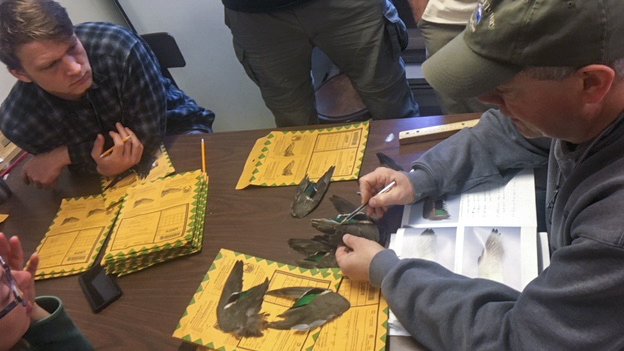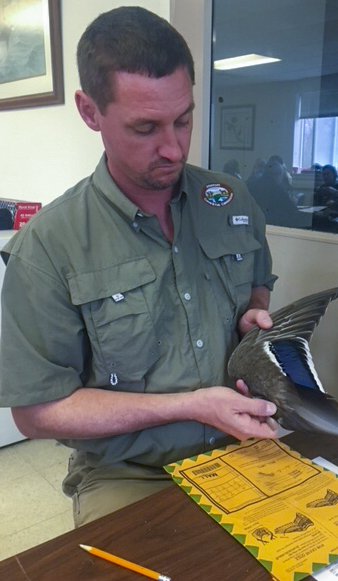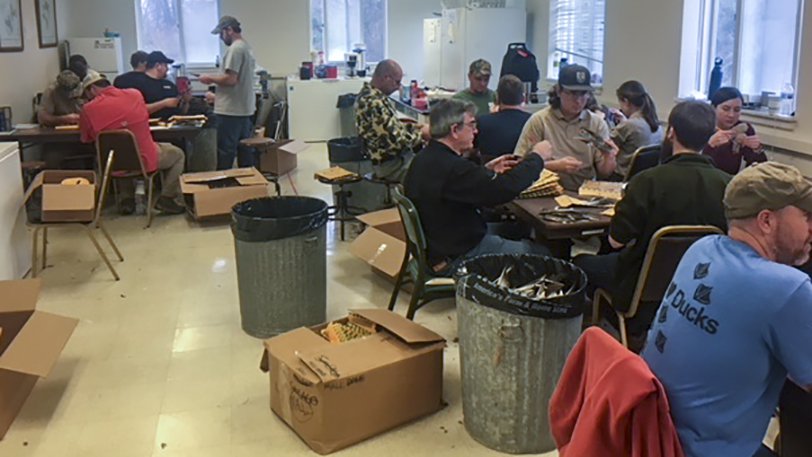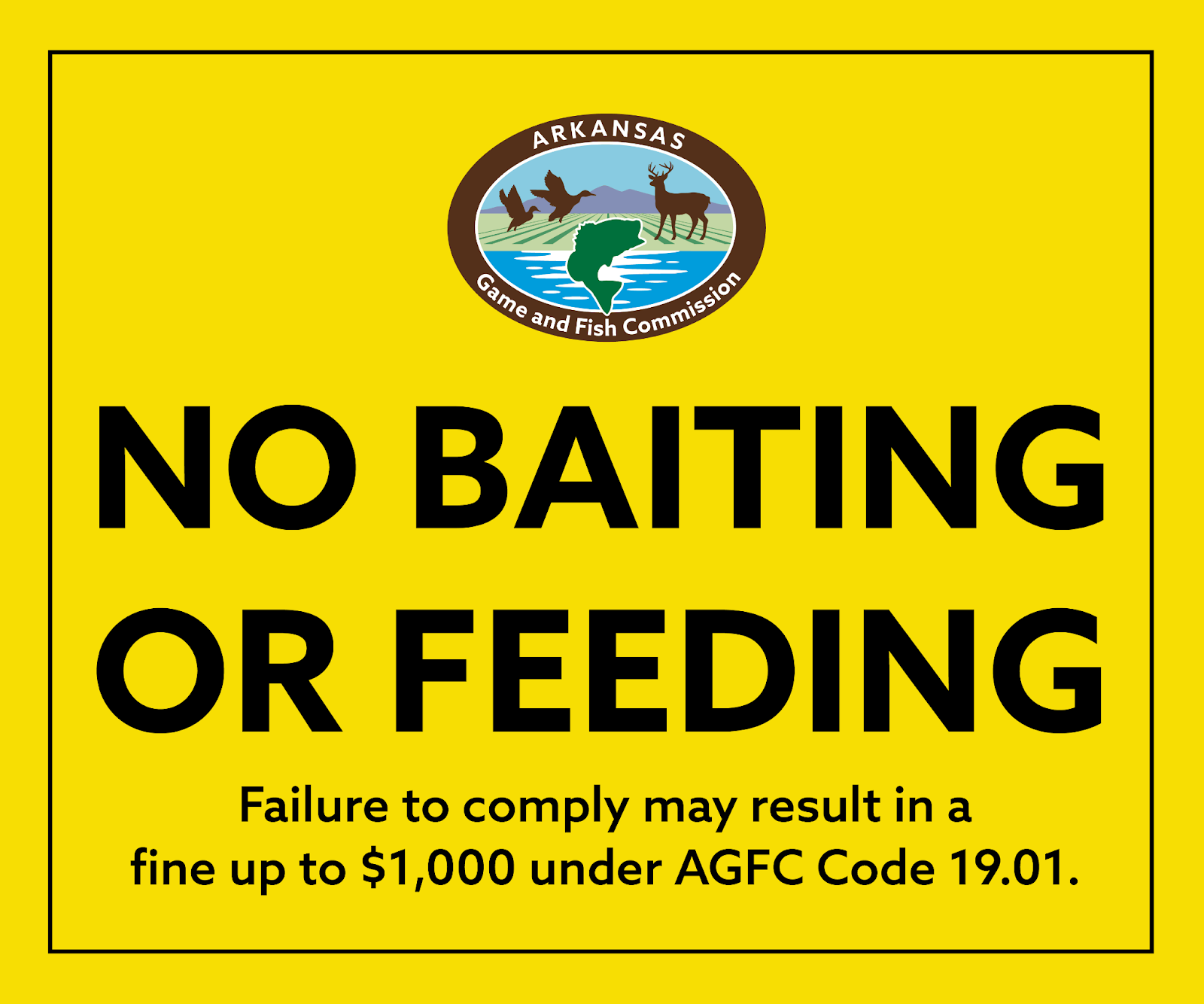Hunter diaries, wing surveys give insight on waterfowl harvest data
ON 08-30-2019

Aug. 30, 2019
Randy Zellers
Assistant Chief of Communications
LITTLE ROCK — Each year, Arkansas waterfowl hunters harvest more mallards than any other state. In many years, Arkansas’s mallard harvest exceeds the total taken by entire flyways. But how do we know how many birds we harvest?
Waterfowl hunters are not required to report every duck and goose they take. Instead, the U.S. Fish and Wildlife Service has been gathering harvest estimates through the Harvest Information Program since it went nationwide in 1999.
“The U.S. Fish and Wildlife Service has kept track of waterfowl harvest through other formal surveys since the late 50s and early 60s, some of those were added as components of HIP when it came out,” said Jason Carbaugh, assistant biologist supervisor.
Most hunters’ experience with HIP is simply registering for free when they buy their license so they can hunt migratory birds. During that registration, the cashier at the license machine or the online system at agfc.com asks a few simple questions about how many birds the hunter estimates they harvested in the previous year, if any. Many hunters mistakenly believe that’s how harvest estimates are gathered, but it’s only the first step in a larger process to develop accurate estimates.
A few thousand hunters are randomly selected from HIP registrations to take part in one of two harvest surveys: The Migratory Bird Hunter Survey or the Waterfowl Parts Survey. Roughly 30 percent of the hunters approached agree to participate, which gives the USFWS a large enough sample size to make solid estimates on the entire waterfowl hunting population.
People selected for the Hunter Survey will receive a diary-style survey form just before the season begins or soon after registering within a season. They are asked to log the number, sex and species of all waterfowl harvested and give general details of each trip. They turn in their results at the end of the season, and the USFWS pools their data with all other participants. These numbers are used to determine overall harvest numbers by state as well as species harvest numbers by state. They also indicate just how many HIP registrants actively pursue waterfowl. Although Arkansas sells more than 100,000 duck stamps, last year’s active duck hunter estimate was just over 60,000 individuals. The remainder of the stamp purchases may have been from people purchasing stamps for their collectible quality or in support conservation of wetlands and waterfowl habitat, or they may have had the intentions of going duck hunting but did not get a chance to participate for some reason.
 AGFC Biologist Jason Carbaugh examining immature male mallard wing
AGFC Biologist Jason Carbaugh examining immature male mallard wing
The USFWS supplements the data from the diary-style hunter information with the Migratory Bird Parts Collection Survey, also known as the “wing survey” or “wingbee.” Hunters are selected from HIP registrations and those who agree to participate mail in certain parts of the migratory birds they take. A wing from each duck harvested and the wing tips and tail feathers of each goose taken are mailed in using the supplied postage-paid envelopes. At the end of each season, biologists from each state in each flyway gather to identify the species, sex and age of each wing supplied.
Jason Carbaugh, AGFC assistant biologist supervisor for the AGFC in Northeast Arkansas, travels to Southern Illinois University (SIU) each winter to represent Arkansas and help in the effort.
“Students in SIU’s wildlife program sort through wings and label them by species before we arrive to streamline the process,” Carbaugh said. “We then label the birds as male and female for ducks and juvenile or adult for ducks and geese.”
Carbaugh says each table of biologists is led by an official checker who has participated in waterfowl parts identification for years, and in some cases, decades and received intensive training.
“This year, we examined about 26,500 parts within the Mississippi Flyway alone,” Carbaugh said. “It’s always interesting when I get an envelope submitted from close to home. Knowing that bird came from your own backyard and then you ended up with it at the wingbee is a little bonus during the four or five days you’re busy identifying piles of wings and tail feathers.”
Visit https://www.fws.gov/birds/surveys-and-data/harvest-surveys.php for more information on USFWS harvest surveys and how biologists help manage waterfowl seasons through science.
 Biologists from the entire Mississippi Flyway convene to identify and evaluate more than 20,000 duck wings each year.
Biologists from the entire Mississippi Flyway convene to identify and evaluate more than 20,000 duck wings each year.
Recent News

Baiting wildlife illegal on Lake Conway
Nov. 22, 2024
Subscribe to Our Weekly Newsletter E-mails
Don’t miss another issue. Sign up now to receive the AGFC Wildlife Weekly Newsletter in your mailbox every Wednesday afternoon (Waterfowl Reports are published weekly during waterfowl season and periodically outside the season). Fishing Reports arrive on Thursdays. Fill in the following fields and hit submit. Thanks, and welcome!

